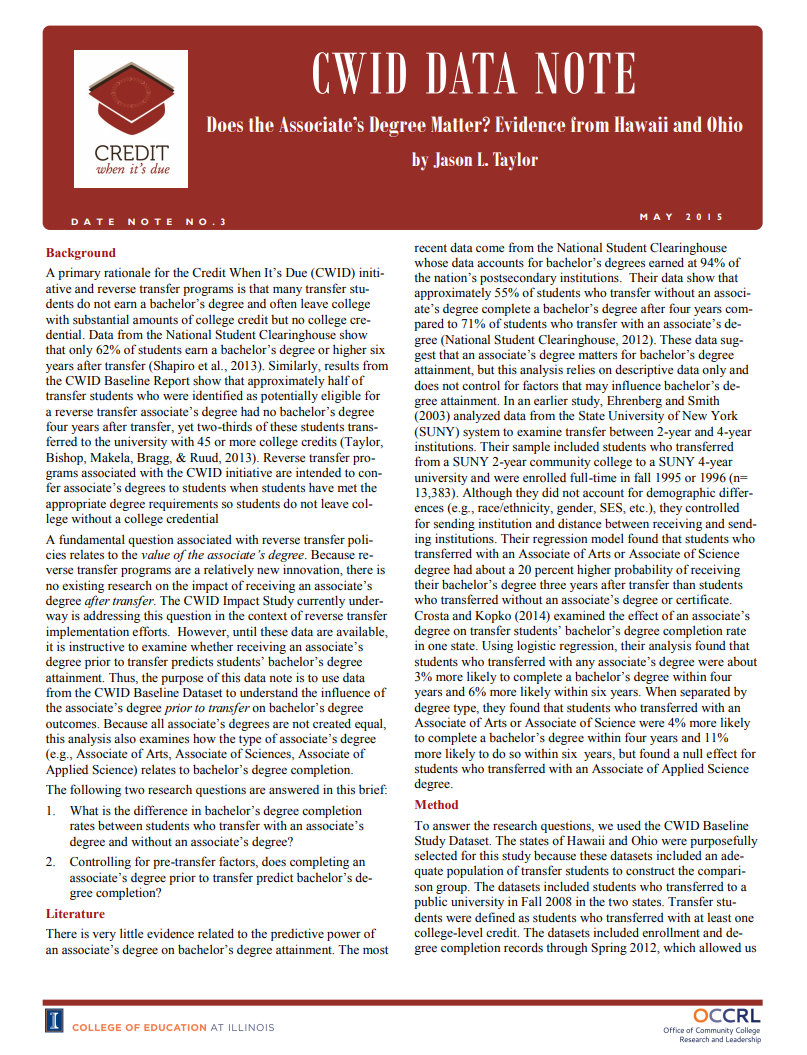CWID Data Note: Does the Associate’s Degree Matter? Evidence from Hawaii and Ohio
Author(s): Jason L. Taylor
Publisher: Office of Community College Research and Leadership (OORCL), University of Illinois
Year: 2015
Description
A primary rationale for the Credit When It’s Due (CWID) initiative and reverse transfer programs is that many transfer students do not earn a bachelor’s degree and often leave college with substantial amounts of college credit but no college credential. Data from the National Student Clearinghouse show that only 62% of students earn a bachelor’s degree or higher six years after transfer (Shapiro et al., 2013). Similarly, results from the CWID Baseline Report show that approximately half of transfer students who were identified as potentially eligible for a reverse transfer associate’s degree had no bachelor’s degree four years after transfer, yet two-thirds of these students transferred to the university with 45 or more college credits (Taylor, Bishop, Makela, Bragg, & Ruud, 2013). Reverse transfer programs associated with the CWID initiative are intended to confer associate’s degrees to students when students have met the appropriate degree requirements so students do not leave college without a college credential.
A fundamental question associated with reverse transfer policies relates to the value of the associate’s degree. Because reverse transfer programs are a relatively new innovation, there is no existing research on the impact of receiving an associate’s degree after transfer. The CWID Impact Study currently underway is addressing this question in the context of reverse transfer implementation efforts. However, until these data are available, it is instructive to examine whether receiving an associate’s degree prior to transfer predicts students’ bachelor’s degree attainment. Thus, the purpose of this data note is to use data from the CWID Baseline Dataset to understand the influence of the associate’s degree prior to transfer on bachelor’s degree outcomes. Because all associate’s degrees are not created equal, this analysis also examines how the type of associate’s degree (e.g., Associate of Arts, Associate of Sciences, Associate of Applied Science) relates to bachelor’s degree completion.

